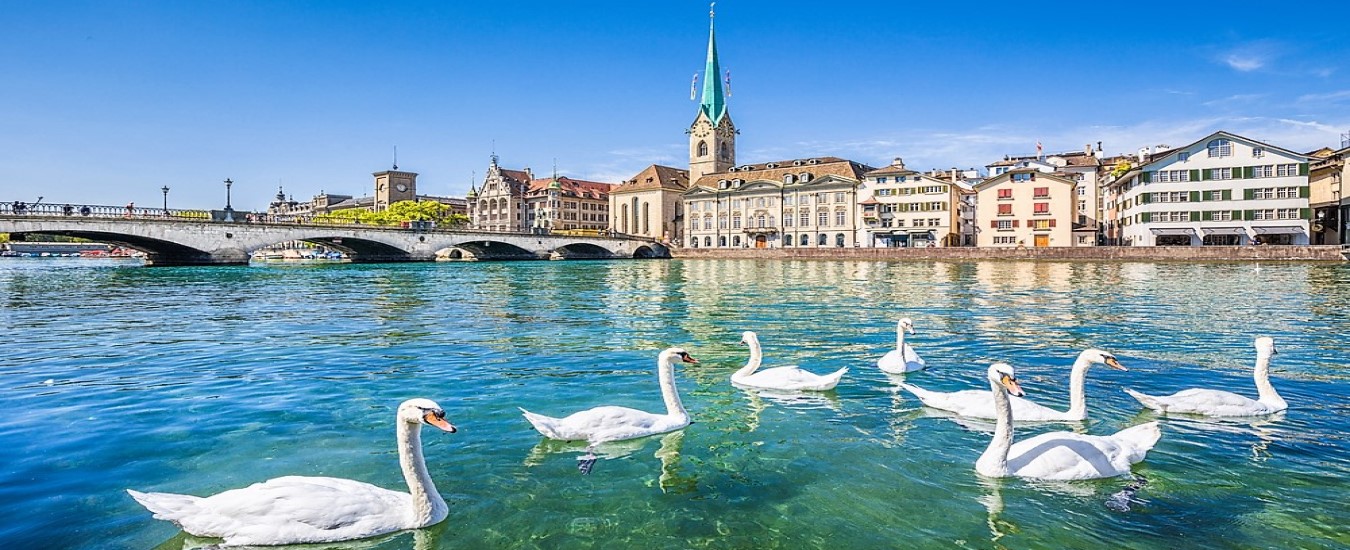
North America
& Caribbean |

South America
|

Africa
|
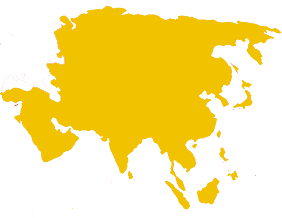
Asia
|
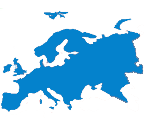
Europe
|

Australia &
Oceania |
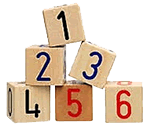
Country Rankings
|

Beyond
Earth |
|
mail
ContactUs
|
|
info
AboutUs
|
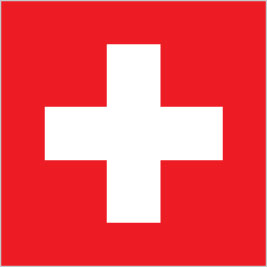
Flag
National anthem
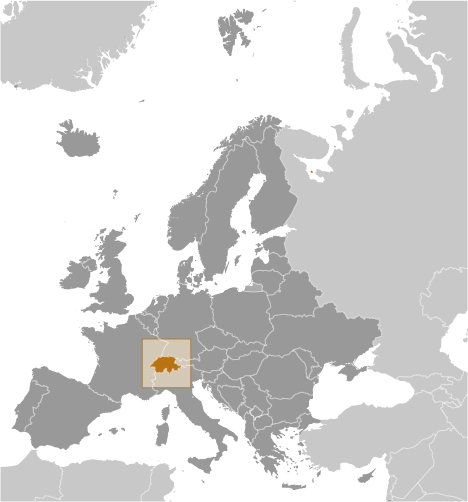
Country location map
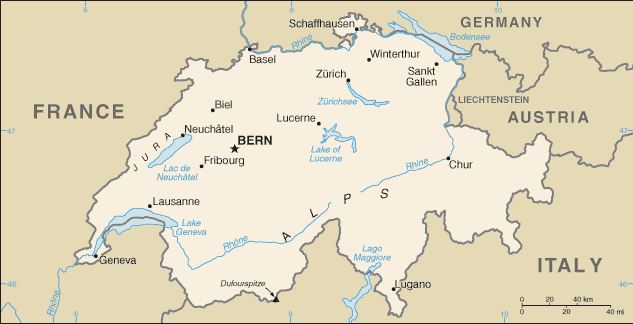
Country static map
Country dynamic (scrollable) map
Current weather & time
-
infoGeneral informationkeyboard_arrow_up
- Country common name: Switzerland
- Country official name: Schweizerische Eidgenossenschaft (German); Confederation Suisse (French); Confederazione Svizzera (Italian); Confederaziun Svizra (Romansh)
- Continent: Europe
- 3-Letter abbreviation: SUI
- 2-Letter abbreviation: CH
- Capital: Bern
- Major cities: 1.395 million Zurich, 430,000 BERN (capital)
- Currency: Swiss franc (click for current conversion rates)
- Languages: German (or Swiss German) (official) 62.6%, French (official) 22.9%, Italian (official) 8.2%, English 5.4%, Portuguese 3.7%, Albanian 3.2%, Serbo-Croatian 2.5%, Spanish 2.4%, Romansh (official) 0.5%, other 7.7%
- Motto: "Unus pro Omnibus, Omnes pro Uno" ("One for all, all for one")
- National holiday(s): Founding of the Swiss Confederation in 1291 - since 1 August 1891 celebrated as Swiss National Day
flagGovernmentkeyboard_arrow_up- Chief of state: President of the Swiss Confederation Ignazio CASSIS (since 1 January 2022); Vice President Alain BERSET (since 1 January 2022); note - the Federal Council, comprised of 7 federal councillors, constitutes the federal government of Switzerland; council members rotate the 1-year term of federal president
- Head of government: President of the Swiss Confederation Ignazio CASSIS (since1 January 2022); Vice President Alain BERSET (since 1 January 2022)
- Government type: federal republic (formally a confederation)
insert_photoCountry notes & photographskeyboard_arrow_up{"ops":[{"attributes":{"bold":true},"insert":"Switzerland"},{"insert":", officially the "},{"attributes":{"bold":true},"insert":"Swiss Confederation"},{"insert":", is a landlocked country located at the confluence of Western, Central and Southern Europe. The country is a federal republic composed of "},{"attributes":{"italic":true},"insert":"26Â cantons"},{"insert":", with federal authorities based in "},{"attributes":{"bold":true},"insert":"Bern"},{"insert":".\n\nSwitzerland is bordered by Italy to the south, France to the west, Germany to the north and Austria and Liechtenstein to the east. It is geographically divided among the Swiss Plateau, the Alps and the Jura, spanning "},{"attributes":{"bold":true},"insert":"41,285 km2"},{"insert":" (15,940 sq mi) with land area comprising 39,997 km2 (15,443 sq mi). The Alps occupy the greater part of the territory. The Swiss population of approximately "},{"attributes":{"bold":true},"insert":"8.7 million"},{"insert":" is concentrated mostly on the plateau, where the largest cities and economic centers are located, including "},{"attributes":{"bold":true},"insert":"Zurich"},{"insert":", "},{"attributes":{"bold":true},"insert":"Geneva "},{"insert":"and "},{"attributes":{"bold":true},"insert":"Basel"},{"insert":". These three cities are home to offices of international organizations such as the "},{"attributes":{"italic":true},"insert":"WTO"},{"insert":", the "},{"attributes":{"italic":true},"insert":"WHO"},{"insert":", the "},{"attributes":{"italic":true},"insert":"ILO"},{"insert":", the headquarters of "},{"attributes":{"italic":true},"insert":"FIFA"},{"insert":", the "},{"attributes":{"italic":true},"insert":"UN's second-largest office"},{"insert":", as well as the main office of the "},{"attributes":{"italic":true},"insert":"BIS"},{"insert":". The main international airports of Switzerland are located in these cities.\n\nThe establishment of the "},{"attributes":{"bold":true},"insert":"Old Swiss Confederacy "},{"insert":"in the Late Middle Ages resulted from a series of military successes against Austria and Burgundy. The "},{"attributes":{"bold":true},"insert":"Federal Charter"},{"insert":" of "},{"attributes":{"bold":true},"insert":"1291 "},{"insert":"is considered the country's founding document, which is celebrated on "},{"attributes":{"bold":true},"insert":"Swiss National Day"},{"insert":". Since the Reformation of the 16th century, Switzerland has maintained a policy of "},{"attributes":{"bold":true},"insert":"armed neutrality"},{"insert":". Swiss independence from the Holy Roman Empire was formally recognized in the Peace of Westphalia in 1648. Switzerland has not fought an international war since 1815. It joined the United Nations only in "},{"attributes":{"bold":true},"insert":"2002"},{"insert":". It pursues an active foreign policy. It is frequently involved in peace-building processes beyond its borders Switzerland is the birthplace of the "},{"attributes":{"bold":true},"insert":"Red Cross,"},{"insert":" one of the world's oldest and best known humanitarian organizations. It is a founding member of the "},{"attributes":{"italic":true},"insert":"European Free Trade Association (EFTA)"},{"insert":", but "},{"attributes":{"bold":true},"insert":"not part of the "},{"attributes":{"italic":true,"bold":true},"insert":"European Union (EU)"},{"insert":", the European "},{"attributes":{"italic":true},"insert":"Economic Area (EEA)"},{"insert":" or the "},{"attributes":{"italic":true},"insert":"Eurozone"},{"insert":". However, it participates in the "},{"attributes":{"italic":true},"insert":"Schengen Area"},{"insert":" and the "},{"attributes":{"italic":true},"insert":"European Single Market"},{"insert":" through bilateral treaties.\n\nIt has four main linguistic and cultural regions: "},{"attributes":{"bold":true},"insert":"German"},{"insert":", "},{"attributes":{"bold":true},"insert":"French"},{"insert":", "},{"attributes":{"bold":true},"insert":"Italian "},{"insert":"and "},{"attributes":{"bold":true},"insert":"Romansh"},{"insert":". Although the majority population are German-speaking, Swiss national identity is rooted in its common historical background, shared values such as federalism and direct democracy, and Alpine symbolism. This identity stretching across languages, ethnic groups, and religions has led many to consider Switzerland a "},{"attributes":{"italic":true,"bold":true},"insert":"Willensnation"},{"attributes":{"bold":true},"insert":" (\"nation of volition\")"},{"insert":", as opposed to a nation-state.\n\nDue to its linguistic diversity, Switzerland is known by "},{"attributes":{"bold":true},"insert":"multiple native names"},{"insert":": Schweiz (German);Suisse (French); Svizzera (Italian); and Svizra (Romansh). On coins and stamps, the Latin name, Confoederatio Helvetica frequently shortened to \""},{"attributes":{"bold":true},"insert":"Helvetia"},{"insert":"\" is used instead of the spoken languages. It has the highest nominal wealth per adult of any country and the eighth-highest per capita gross domestic product. It ranks highly on some international metrics, including economic competitiveness and human development. Its cities such as Zurich, Geneva and Basel rank among the highest in terms of quality of life, albeit with some of the highest costs of living.In 2020, IMD placed Switzerland first in attracting skilled workers. The WEF ranks it the "},{"attributes":{"bold":true},"insert":"fifth most competitive country globally"},{"insert":".\n"}]}terrainGeographic informationkeyboard_arrow_up- Surface area (in km²): 41,277
- Highest point: Dufourspitze 4,634 m
- Neighboring countries: Austria 158 km, France 525 km, Italy 698 km, Liechtenstein 41 km, Germany 348 km
- Neighboring seas and oceans: None
- Climate: temperate, but varies with altitude; cold, cloudy, rainy/snowy winters; cool to warm, cloudy, humid summers with occasional showers
radioRadio stationskeyboard_arrow_upsupervised_user_circlePopulationkeyboard_arrow_up- Population: 8,703,994
- Population density (inhabitants per km²): 210.9
- Average age (in years): 42.7
- Life expectancy at birth (in years): 82.8
- Ethnicity: Swiss 69.5%, German 4.2%, Italian 3.2%, Portuguese 2.6%, French 2%, Albanian 1.1%, other 17.3%, unspecified .1%
- Gross domestic product (GDP) per inhabitant (in US dollars): 86,601
- Cultural practices: Speaking too loudly in public, especially on cell phones, is frowned upon.
local_diningPopular food & drinkskeyboard_arrow_up{"ops":[{"attributes":{"bold":true},"insert":"Fondue"},{"insert":" ((UK: /ˈfɒnd(j)uː/, US: /fɒnˈd(j)uː/, French: [fɔ̃dy]) is a "},{"attributes":{"bold":true},"insert":"Swiss"},{"insert":" "},{"attributes":{"bold":true},"insert":"melted cheese "},{"insert":"dish served in a "},{"attributes":{"bold":true},"insert":"communal pot"},{"insert":" ("},{"attributes":{"italic":true},"insert":"caquelon"},{"insert":" or fondue pot) over a "},{"attributes":{"bold":true},"insert":"portable stove"},{"insert":" ("},{"attributes":{"italic":true},"insert":"réchaud"},{"insert":") heated with a candle or spirit lamp, and eaten by dipping bread into the cheese using long-stemmed forks. It was promoted as a Swiss"},{"attributes":{"bold":true},"insert":" national dish"},{"insert":" by the Swiss Cheese Union (Schweizerische Käseunion) in the 1930s, and was popularized in North America in the 1960s. Since the 1950s, the term \"fondue\" has been generalized to other dishes in which a food is dipped into a communal pot of liquid kept hot in a fondue pot: chocolate fondue, "},{"attributes":{"italic":true},"insert":"fondue au chocolat"},{"insert":", in which pieces of fruit or pastry are dipped into a melted chocolate mixture, and "},{"attributes":{"italic":true},"insert":"fondue bourguignonne"},{"insert":", in which pieces of meat are cooked in hot oil or broth.\n"}]}
{"ops":[{"attributes":{"bold":true},"insert":"Röstii"},{"insert":" or "},{"attributes":{"bold":true},"insert":"rööschti"},{"insert":" (Alemannic German) is a Swiss dish consisting mainly of "},{"attributes":{"bold":true},"insert":"potatoes"},{"insert":", "},{"attributes":{"italic":true},"insert":"sautéed "},{"insert":"or"},{"attributes":{"italic":true},"insert":" shallow-fried"},{"insert":" in a pan. It was originally a "},{"attributes":{"bold":true},"insert":"breakfast dish"},{"insert":", commonly eaten by farmers in the canton of Bern, but is now eaten all over Switzerland and around the world. The French name "},{"attributes":{"italic":true},"insert":"röstis bernois"},{"insert":" directly refers to the dish's origins. Many Swiss people consider rösti to be a "},{"attributes":{"bold":true},"insert":"national dish"},{"insert":". Rather than considering it a complete breakfast, lunch or dinner, it is more commonly served to "},{"attributes":{"bold":true},"insert":"accompany other dishes"},{"insert":" such as "},{"attributes":{"italic":true},"insert":"Spinat und Spiegelei"},{"insert":" (spinach and fried eggs, sunny side up), cervelas or Fleischkäse. It is commonly available in Swiss restaurants as a replacement for the standard side dish of a given meal.\n"}]}
{"ops":[{"insert":"Essentially oats soaked in fruit juice, or milk, with nuts and fruit, "},{"attributes":{"bold":true},"insert":"Bircher muesli"},{"insert":" has a long history, and enough versions floating around to prove it. The original was created in the "},{"attributes":{"italic":true},"insert":"early 1900s"},{"insert":" by "},{"attributes":{"bold":true},"insert":"Maximilian Bircher-Benner"},{"insert":", a "},{"attributes":{"bold":true},"insert":"Swiss doctor"},{"insert":". Believing that a diet consisting of cereals, fruits, and vegetables is better than one based heavily on meat, he created "},{"attributes":{"italic":true},"insert":"Bircher müesli"},{"insert":" for patients in his Zurich sanatorium. It consisted of "},{"attributes":{"bold":true},"insert":"oats"},{"insert":", "},{"attributes":{"bold":true},"insert":"grated apple"},{"insert":", "},{"attributes":{"bold":true},"insert":"nuts"},{"insert":", "},{"attributes":{"bold":true},"insert":"lemon"},{"insert":" and "},{"attributes":{"bold":true},"insert":"condensed milk"},{"insert":" and "},{"attributes":{"bold":true},"insert":"honey"},{"insert":", but over time, people have gotten creative with the formula. The original recipe entailed soaking the raw oats overnight to help them soften. Today, the dish is still a very popular breakfast throughout Switzerland and Germany. However, many people use quick oats to speed up the preparation time in the morning.\n"}]}
{"ops":[{"attributes":{"bold":true},"insert":"Absinthe"},{"insert":" ("},{"attributes":{"height":"11","width":"11","link":"https://en.wikipedia.org/wiki/File:Fr-absinthe.ogg"},"insert":{"image":"https://upload.wikimedia.org/wikipedia/commons/thumb/8/8a/Loudspeaker.svg/11px-Loudspeaker.svg.png"}},{"attributes":{"link":"https://upload.wikimedia.org/wikipedia/commons/e/e6/Fr-absinthe.ogg"},"insert":"listen"},{"insert":") is an anise-flavored spirit derived from several plants, including the flowers and leaves of "},{"attributes":{"italic":true},"insert":"Artemisia absinthium"},{"insert":" (\"grand wormwood\"), together with green anise, sweet fennel, and other medicinal and culinary herbs. Historically described as a highly alcoholic spirit, it is 45-74% ABV or 90-148 proof US. Absinthe traditionally has a natural green color but may also be colorless. It is commonly referred to in historical literature as "},{"attributes":{"italic":true},"insert":"la fée verte"},{"insert":" (\"the green fairy\"). It is sometimes mistakenly referred to as a liqueur, but is not traditionally bottled with added sugar and is, therefore, classified as a spirit. Absinthe is traditionally bottled at a high level of alcohol by volume, but it is normally diluted with water before being consumed. Absinthe originated in the"},{"attributes":{"bold":true},"insert":" canton of Neuchâtel"},{"insert":" in"},{"attributes":{"bold":true},"insert":" "},{"insert":"Switzerland in the"},{"attributes":{"bold":true},"insert":" late 18th century"},{"insert":". It rose to great popularity as an alcoholic drink in late 19th- and early 20th-century France, particularly among Parisian artists and writers. The consumption of absinthe was opposed by social conservatives and prohibitionists, partly due to its association with "},{"attributes":{"bold":true},"insert":"bohemian culture"},{"insert":". From Europe and the Americas, notable absinthe drinkers included "},{"attributes":{"bold":true},"insert":"Ernest Hemingway,"},{"insert":" "},{"attributes":{"bold":true},"insert":"James Joyce"},{"insert":", Charles Baudelaire, Paul Verlaine, Arthur Rimbaud, Henri de Toulouse-Lautrec, Amedeo Modigliani, "},{"attributes":{"bold":true},"insert":"Pablo Picasso"},{"insert":", "},{"attributes":{"bold":true},"insert":"Vincent van Gogh"},{"insert":", Oscar Wilde, Marcel Proust, Aleister Crowley, Erik Satie, "},{"attributes":{"bold":true},"insert":"Edgar Allan Poe"},{"insert":", "},{"attributes":{"bold":true},"insert":"Lord Byron"},{"insert":", and Alfred Jarry.\n"}]}
local_post_officePostage stampskeyboard_arrow_up{"ops":[{"insert":"While individual Swiss cantons have been issuing postage stamps since the 1840s, "},{"attributes":{"bold":true},"insert":"first federal stamps"},{"insert":" arrived on the market in "},{"attributes":{"bold":true},"insert":"1850"},{"insert":". They simply bear the Swiss "},{"attributes":{"bold":true},"insert":"coat of arms "},{"insert":"and a "},{"attributes":{"bold":true},"insert":"post horn symbol"},{"insert":". The federal postage stamps simplified operations: it was now possible to collect postage from the sender, not the recipient. This simplified and speeded up the service provided by mail carriers, who no longer had to collect the transport costs themselves. Switzerland is the "},{"attributes":{"bold":true},"insert":"second country in the world"},{"insert":" – after England – to introduce postage stamps.\n"}]}
{"ops":[{"insert":"This "},{"attributes":{"bold":true},"insert":"2020"},{"insert":" commemorative stamp -- issued to celebrate the "},{"attributes":{"bold":true},"insert":"Geneva Airport "},{"insert":"(Genève Aéroport)"},{"attributes":{"bold":true},"insert":"'s 100th anniversary"},{"insert":" -- depicts a "},{"attributes":{"bold":true},"insert":"biplane"},{"insert":" from the beginning of the past century flying above a "},{"attributes":{"bold":true},"insert":"modern wide-body aircraft"},{"insert":", showcasing Genève Aéroport as a"},{"attributes":{"bold":true},"insert":" gateway to the world"},{"insert":" and other continents. The background is composed of "},{"attributes":{"bold":true},"insert":"Geneva Water Fountain"},{"insert":", the snow-capped Alps and one of the "},{"attributes":{"bold":true},"insert":"largest concrete runways"},{"insert":" in the world, measuring 3,900 meters. On 11 October 1919, the Grand Council of Geneva approved the building of an \"airfield\" in Meyrin. One hundred years later, the small Cointrin aerodrome has changed a lot. To celebrate this incredible adventure, a team of 30 people from different departments in the airport prepared for the anniversary for over a year. Around twenty projects were set up and rolled out in 2020 with the motto \"Our airport, my history\".. Four hundred employees took part in a giant photo on the tarmac in April 2019, a sign of particularly strong team spirit during the preparations\n"}]}
{"ops":[{"insert":"In "},{"attributes":{"bold":true},"insert":"2021 "},{"insert":"Swiss post issued a stamp commemorating the 100th anniversary of the "},{"attributes":{"bold":true},"insert":"discovery of insulin"},{"insert":". Since "},{"attributes":{"bold":true},"insert":"1921"},{"insert":", the diagnosis of type 1 diabetes no longer means a death sentence. The reason for this is the invention of insulin. This groundbreaking discovery is on a par with the one of the "},{"attributes":{"bold":true},"insert":"antibiotics"},{"insert":". The three-dimensional model visualized on the stamp shows the tertiary structure of an insulin molecule and at the same time resembles a garland. Because: there is something to celebrate. Happy Birthday Insulin.\n"}]}
{"ops":[{"attributes":{"bold":true},"insert":"Barry"},{"insert":" is the name of the famous dog from the "},{"attributes":{"bold":true},"insert":"Great St Bernard"},{"insert":" hospice who is said to have saved the lives of 40 people. His electronic counterpart in the modern era is a device called "},{"attributes":{"bold":true},"insert":"Barryvox"},{"insert":" – an avalanche transceiver. It is featured on the above "},{"attributes":{"bold":true},"insert":"2022 "},{"insert":"commemorative stamp from the annual \"Swiss Inventions\" miniature sheet set. The Barryvox devices, also called "},{"attributes":{"bold":true},"insert":"avalanche beacons"},{"insert":", are used to locate and rescue people caught up in avalanches as quickly as possible. After all, any chance of survival falls dramatically after just a few minutes. Swiss electrical engineer and SAC tour guide "},{"attributes":{"bold":true},"insert":"Felix Meier"},{"insert":" played a key role in the development of the device up to its current version, the "},{"attributes":{"bold":true},"insert":"Barryvox® S by Mammut"},{"insert":". The device, which has been improved continuously over more than 40 years, now has a range of up to 100 meters and is able to distinguish between several signals coming from people buried by an avalanche.\n"}]}
tap_and_playTelephone & Internet communicationkeyboard_arrow_up- Country international telephone code: +41
- Local emergency telephone number(s): Ambulance: 144; Fire: 118; Police: 117
- Internet code: .ch
- Number of Internet users: 8,372,744
- Percentage of Internet-connected population: 96.2%
gradeAlso useful to knowkeyboard_arrow_up- Vaccinations: For recommendations please refer to the World Health Organization (WHO), or the U.S. Centers for Disease Control (CDC) websites.
- Potable/drinkable water: Yes
- International driving permit: Suggested
- Road driving side: Right
-
Electricity/Voltage/Plug type(s):
230 V / 50 Hz / plug type(s): C, J
keyboard_arrow_leftkeyboard_arrow_right10
-
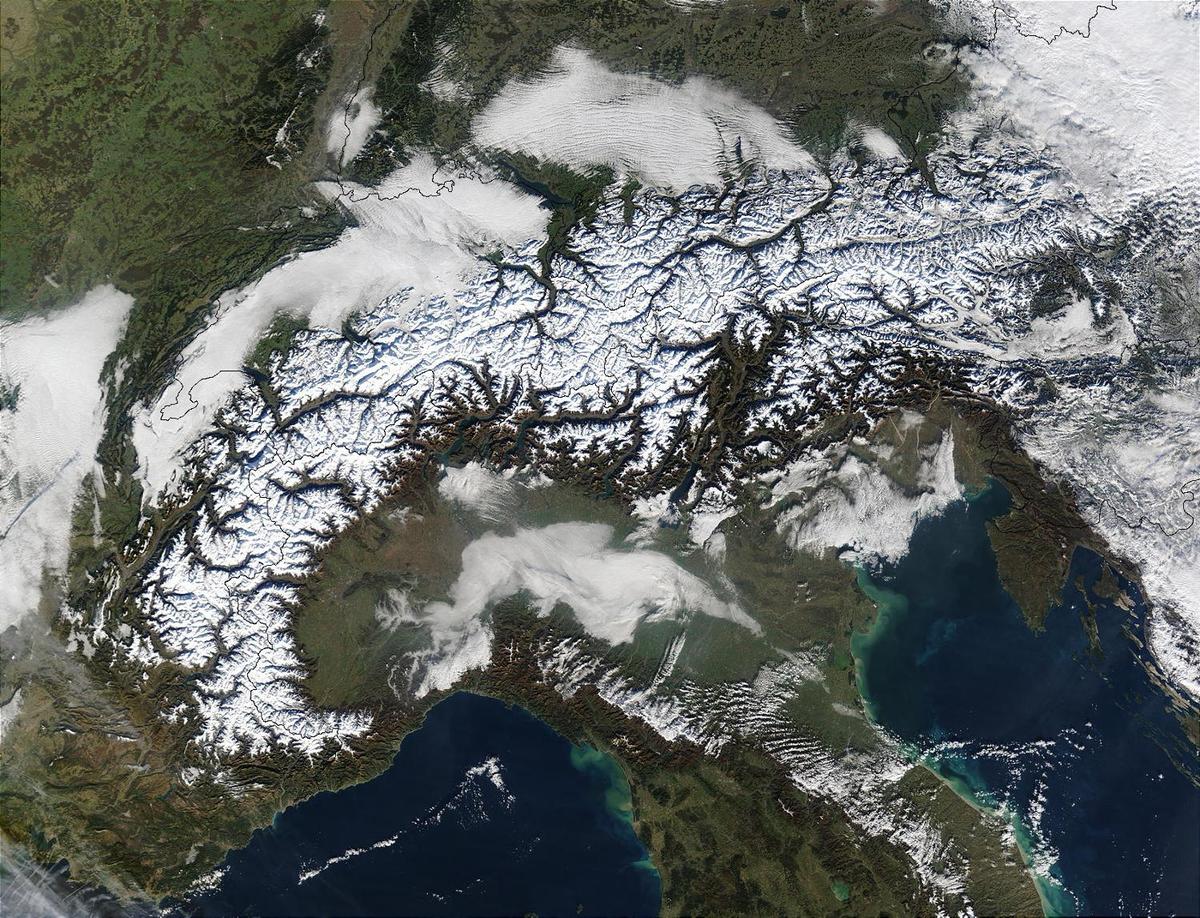
{"ops":[{"insert":"The "},{"attributes":{"bold":true},"insert":"Alps "},{"insert":"march across this image of Autumnal (early October) southern Europe. On either side of and above the Alps are the countries of (from left to right) France, Switzerland, Liechtenstein, Austria, and Slovenia, while below the Alps is Italy. The Mediterranean and Ligurian Seas sit to the west of Italy, while to the right is the Adriatic Sea. As the season progresses, snow begins to whiten the Alps. Image courtesy of NASA.\n"}]}
-
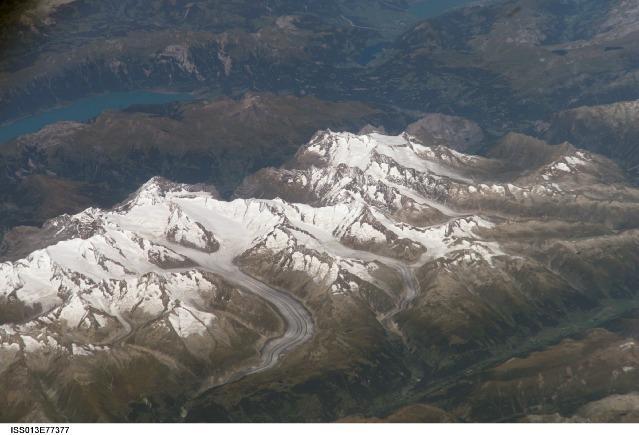
{"ops":[{"insert":"Three of the higher peaks of the "},{"attributes":{"bold":true},"insert":"Bernese Alps"},{"insert":" are visible - "},{"attributes":{"bold":true},"insert":"Jungfrau "},{"insert":"(4,158 m), "},{"attributes":{"bold":true},"insert":"Moench "},{"insert":"(4,089 m), and "},{"attributes":{"bold":true},"insert":"Eiger "},{"insert":"(3,970 m). To the east and south of the Jungfrau is the "},{"attributes":{"bold":true},"insert":"Aletsch Glacier"},{"insert":", clearly marked by dark medial moraines extending along the glacier's length parallel to the valley axis. Moraines are formed from rock and soil debris scoured along the sides of mountain glaciers that gradually accumulate in the middle of the glacier and are carried along the flow direction. Lake Brienz to the northwest is glacially carved. Image courtesy of NASA.\n"}]}
-
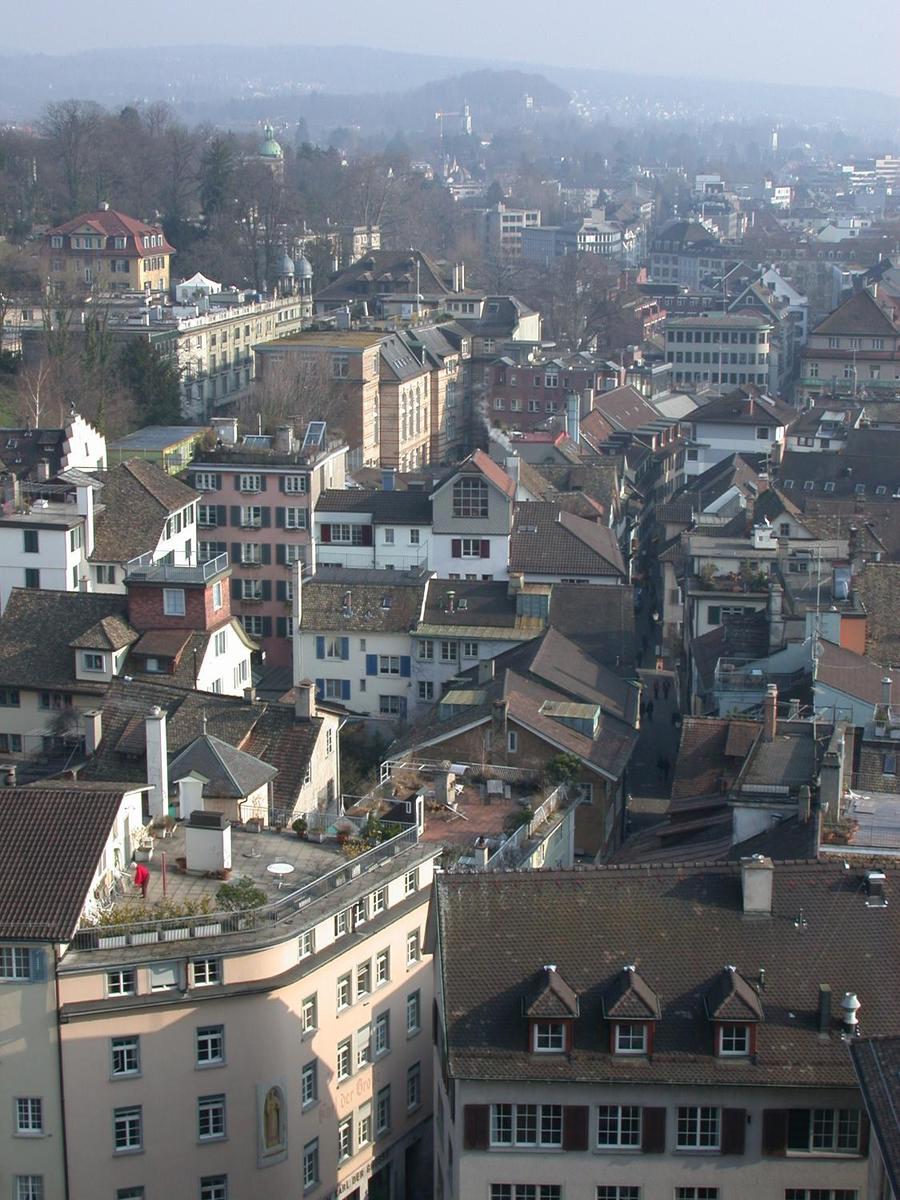
{"ops":[{"insert":"Aerial view of "},{"attributes":{"bold":true},"insert":"Zurich"},{"insert":".\n"}]}
-
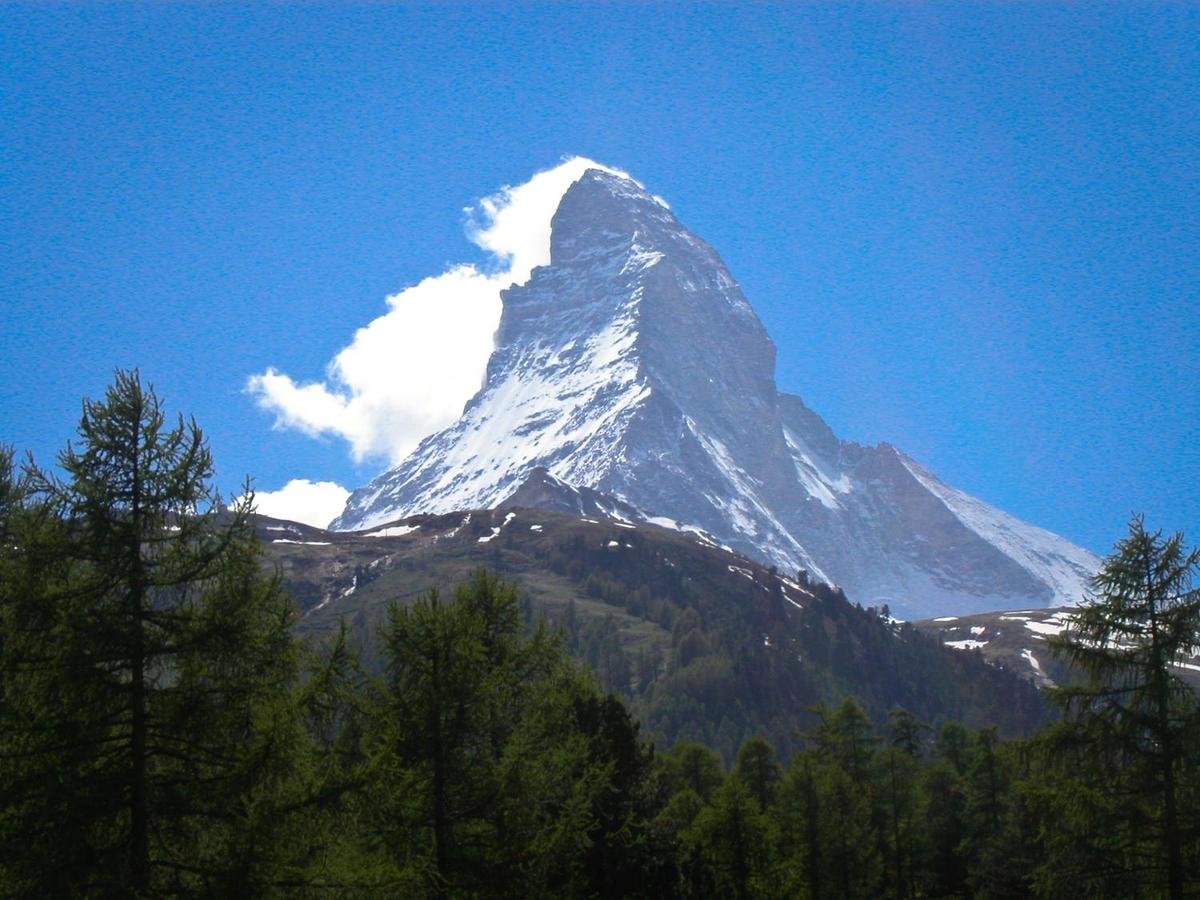
{"ops":[{"insert":"The "},{"attributes":{"bold":true},"insert":"Matterhorn"},{"insert":" is a "},{"attributes":{"bold":true},"insert":"pyramidal "},{"insert":"mountain on the border between "},{"attributes":{"bold":true},"insert":"Switzerland "},{"insert":"and "},{"attributes":{"bold":true},"insert":"Italy"},{"insert":". Its summit is "},{"attributes":{"bold":true},"insert":"4,478 m"},{"insert":" (14,692 ft) high, making it one of the highest, most famous, and deadliest peaks in the Alps. The steep faces, oriented to each compass point, cause regular "},{"attributes":{"bold":true},"insert":"avalanches"},{"insert":"; the snow that builds up around the base forms "},{"attributes":{"bold":true},"insert":"glaciers"},{"insert":". Mountains around the world with similar profiles frequently earn \"Matterhorn\" as a nickname because of the mountain's iconic shape.\n"}]}
-
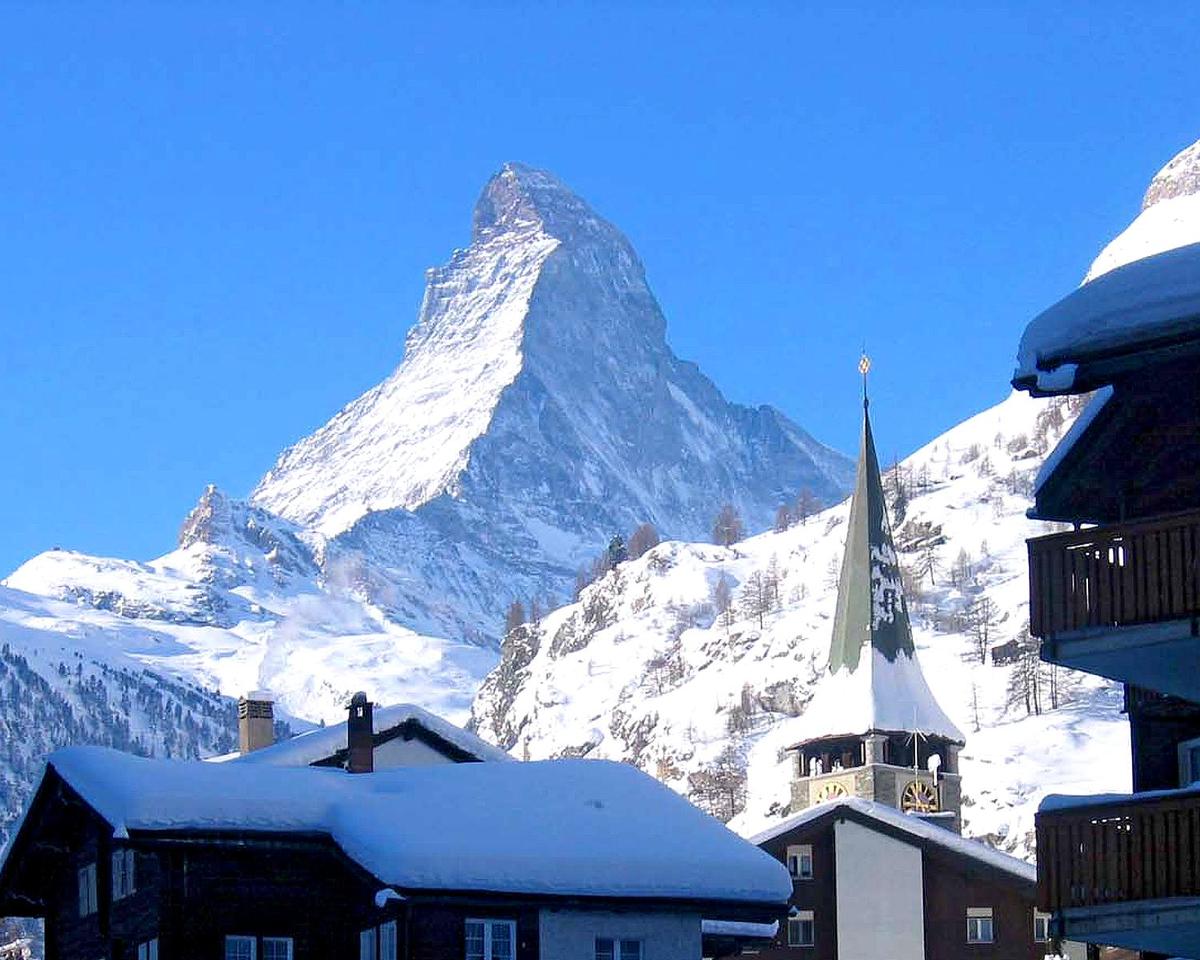
{"ops":[{"insert":"The "},{"attributes":{"bold":true},"insert":"Matterhorn"},{"insert":" towers over the roofs of Zermatt; at "},{"attributes":{"bold":true},"insert":"4,478 m "},{"insert":"(14,688 ft), is one of the highest peaks in the Alps.\n"}]}
-
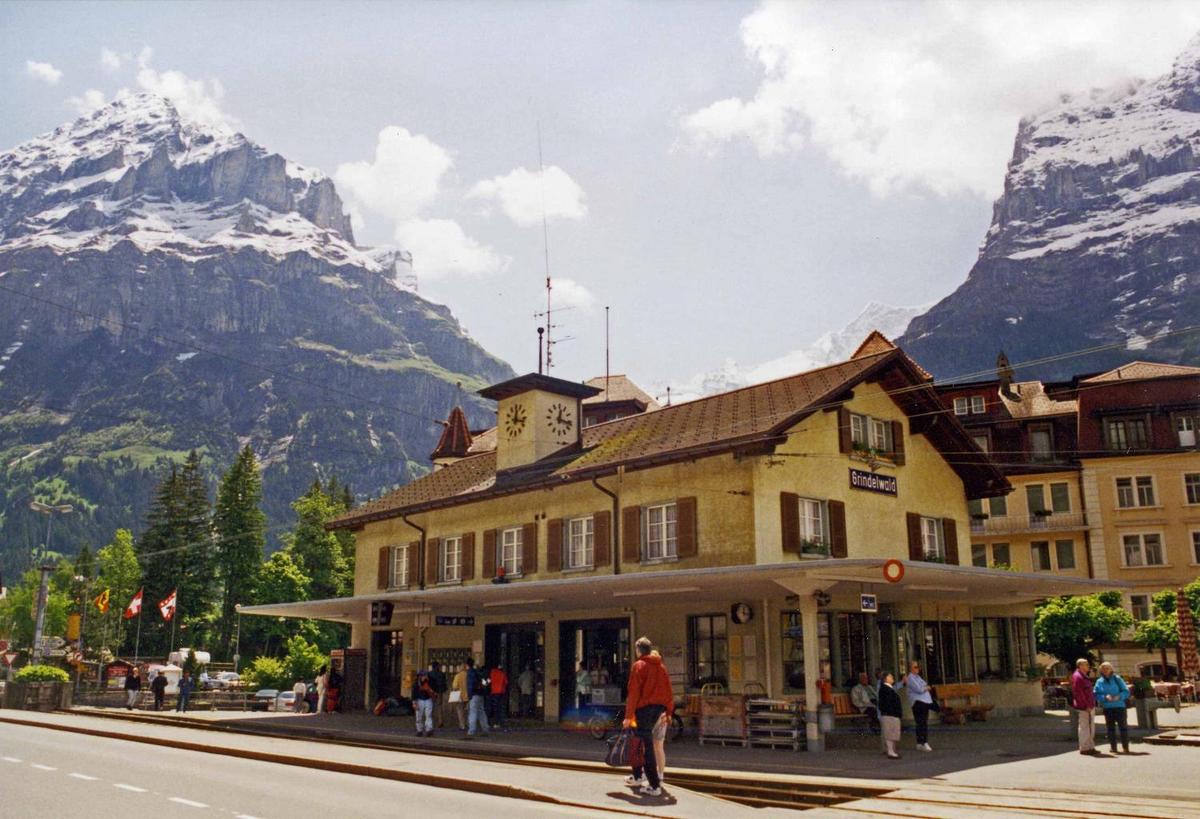
{"ops":[{"insert":"The train station in "},{"attributes":{"bold":true},"insert":"Grindelwald "},{"insert":"on a sunny day. Located in the canton of "},{"attributes":{"bold":true},"insert":"Bern"},{"insert":", this agricultural community lies "},{"attributes":{"bold":true},"insert":"1,034 m "},{"insert":"(3,392 ft) above sea level, and attracts tourists for hiking in the summer and skiing in the winter.\n"}]}
-
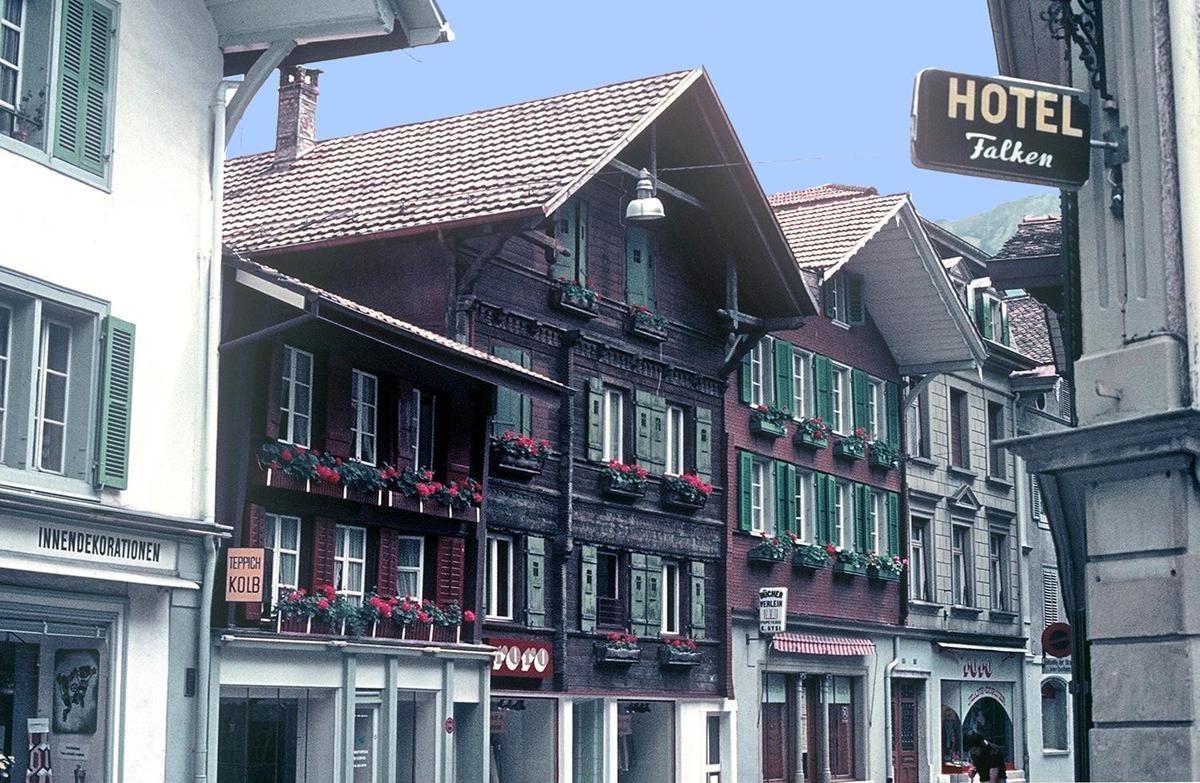
{"ops":[{"insert":"A charming street scene in "},{"attributes":{"bold":true},"insert":"Interlaken"},{"insert":", "},{"attributes":{"bold":true},"insert":"Bern "},{"insert":"canton.\n"}]}
-
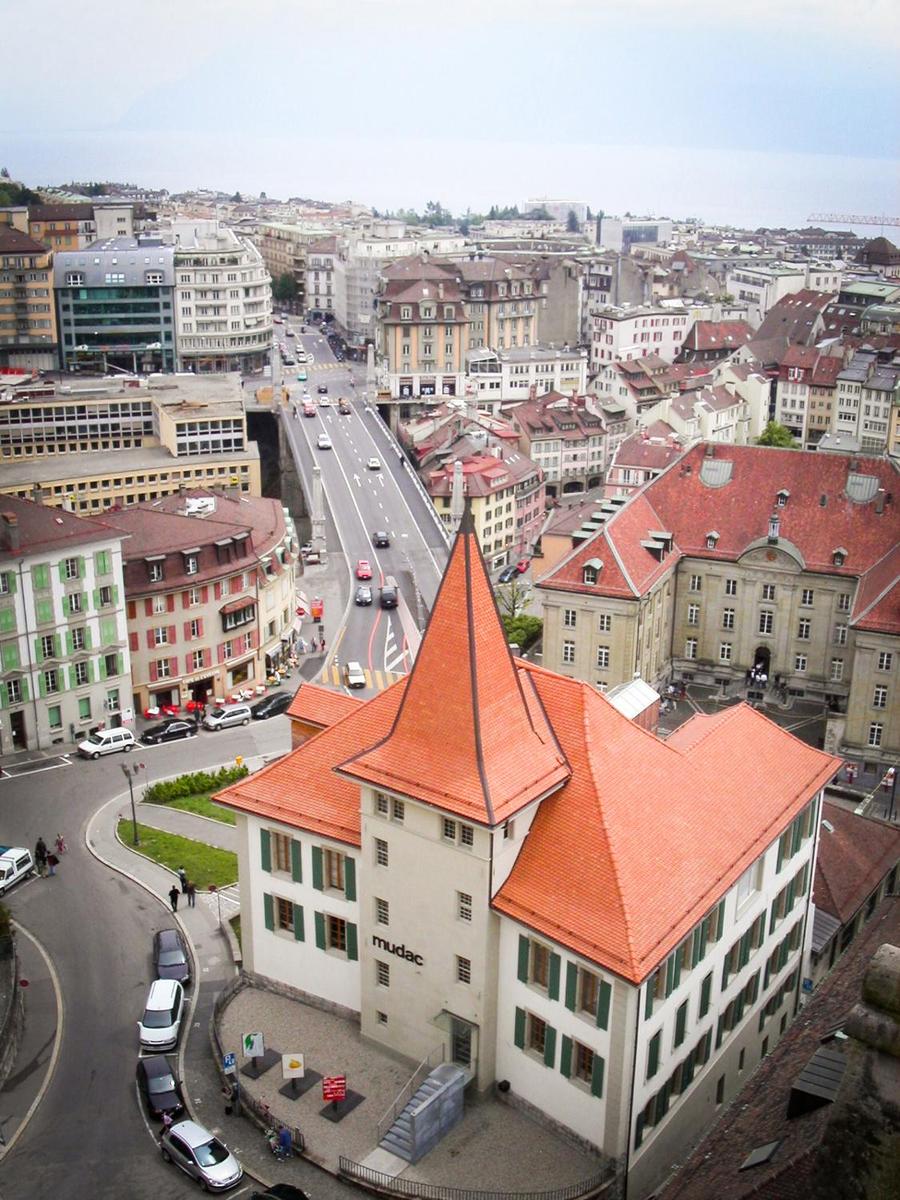
{"ops":[{"insert":"Overlooking the "},{"attributes":{"bold":true},"insert":"Mudac Museum for Contemporary Applied Arts"},{"insert":" in "},{"attributes":{"bold":true},"insert":"Lausanne"},{"insert":". The Mudac opened in 2000 replacing the Museum for Decorative Arts.\n"}]}
-
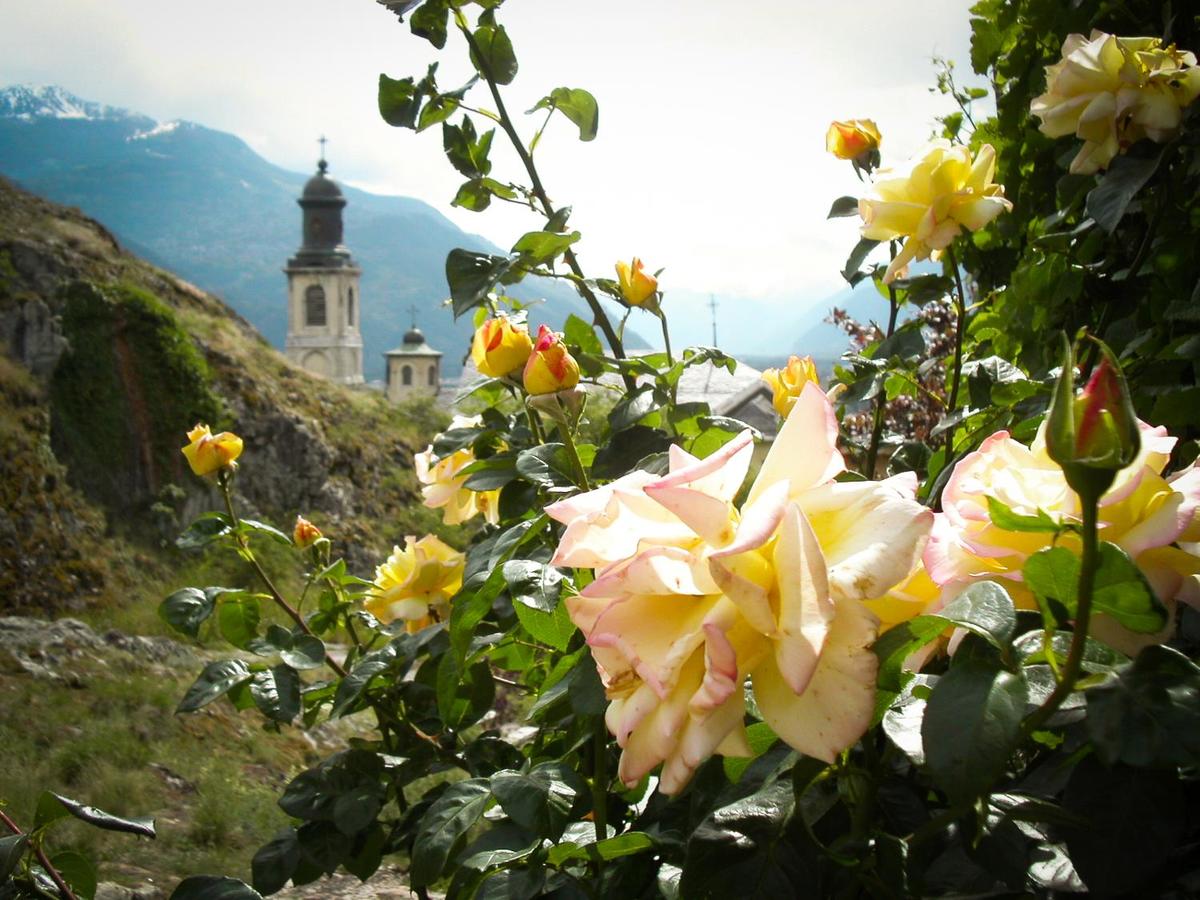
{"ops":[{"insert":"Rosebuds reach for the heavens near a church in the valley town of "},{"attributes":{"bold":true},"insert":"Sion"},{"insert":".\n"}]}
-
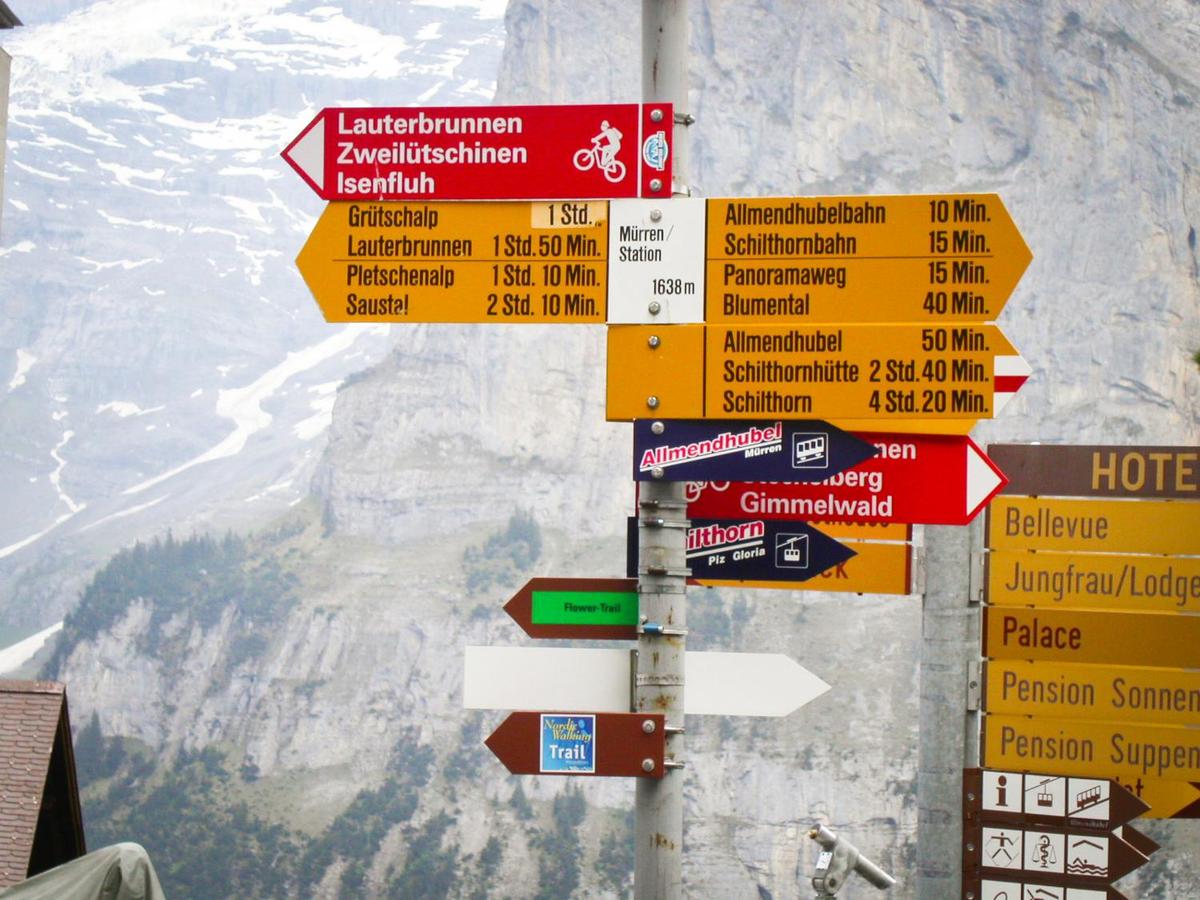
{"ops":[{"insert":"Way signs in "},{"attributes":{"bold":true},"insert":"Murren"},{"insert":", a traditional mountain village in Bernese Oberland, unreachable by public road. The village features a view of the three towering mountains: Eiger, Monch, and Jungfrau. At an elevation of "},{"attributes":{"bold":true},"insert":"1,650 m "},{"insert":"(5,413 ft), access to the village is via four cable cars known as "},{"attributes":{"bold":true},"insert":"Luftseilbahn-Stechelberg-Murren-Schilthorn "},{"insert":"(LSMS), which also provide access to the summit of "},{"attributes":{"bold":true},"insert":"Schilthorn"},{"insert":", the location of a "},{"attributes":{"bold":true},"insert":"rotating restaurant"},{"insert":" with spectacular views.\n"}]}
-
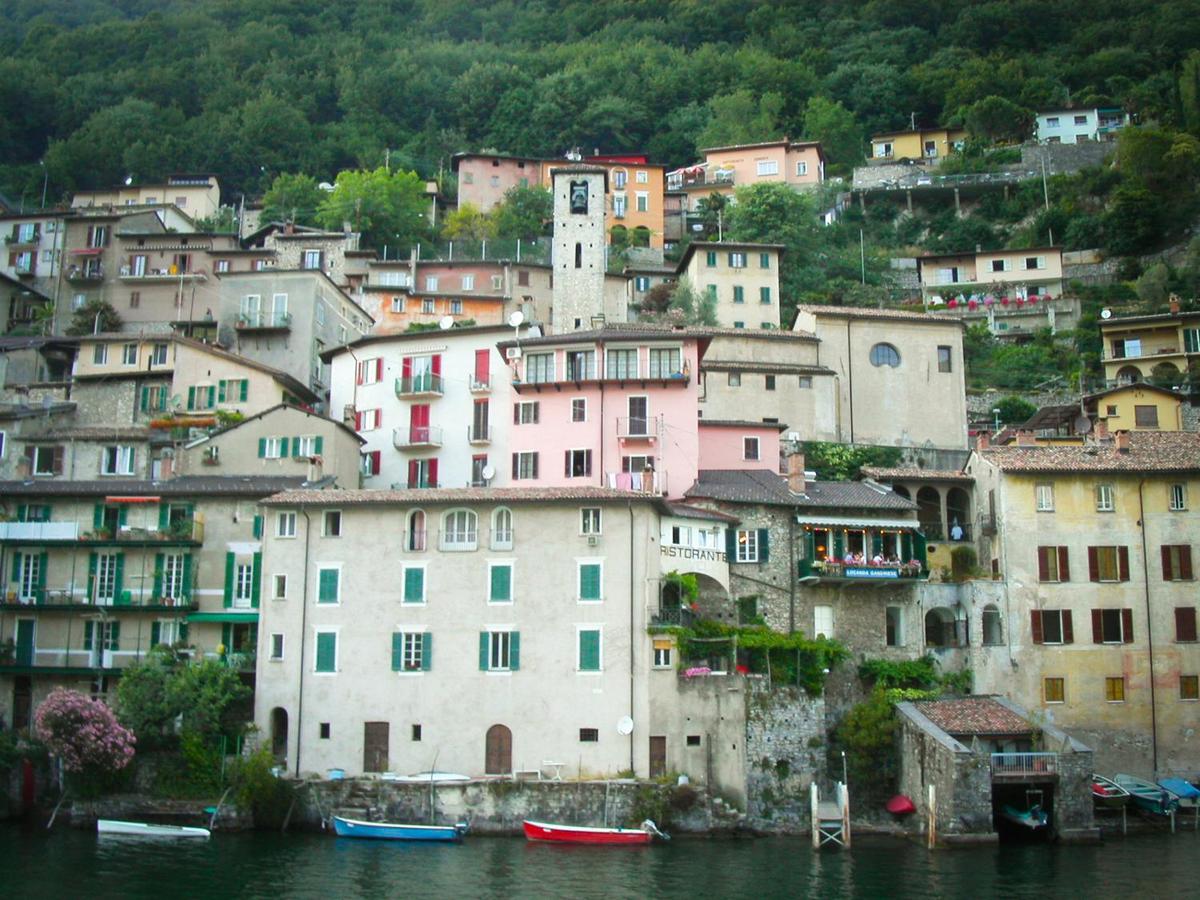
{"ops":[{"attributes":{"bold":true},"insert":"Lake Lugano"},{"insert":" is a glacial lake at the border between Switzerland and "},{"attributes":{"bold":true},"insert":"Italy"},{"insert":". At 49 sq km (19 sq mi) and an average width of approximately one kilometer (over half a mile), roughly 60% of the lake lies in Switzerland, the rest in Italy.\n"}]}
-

{"ops":[{"insert":"House overlooking an "},{"attributes":{"bold":true},"insert":"Alpine valley"},{"insert":".\n"}]}
-
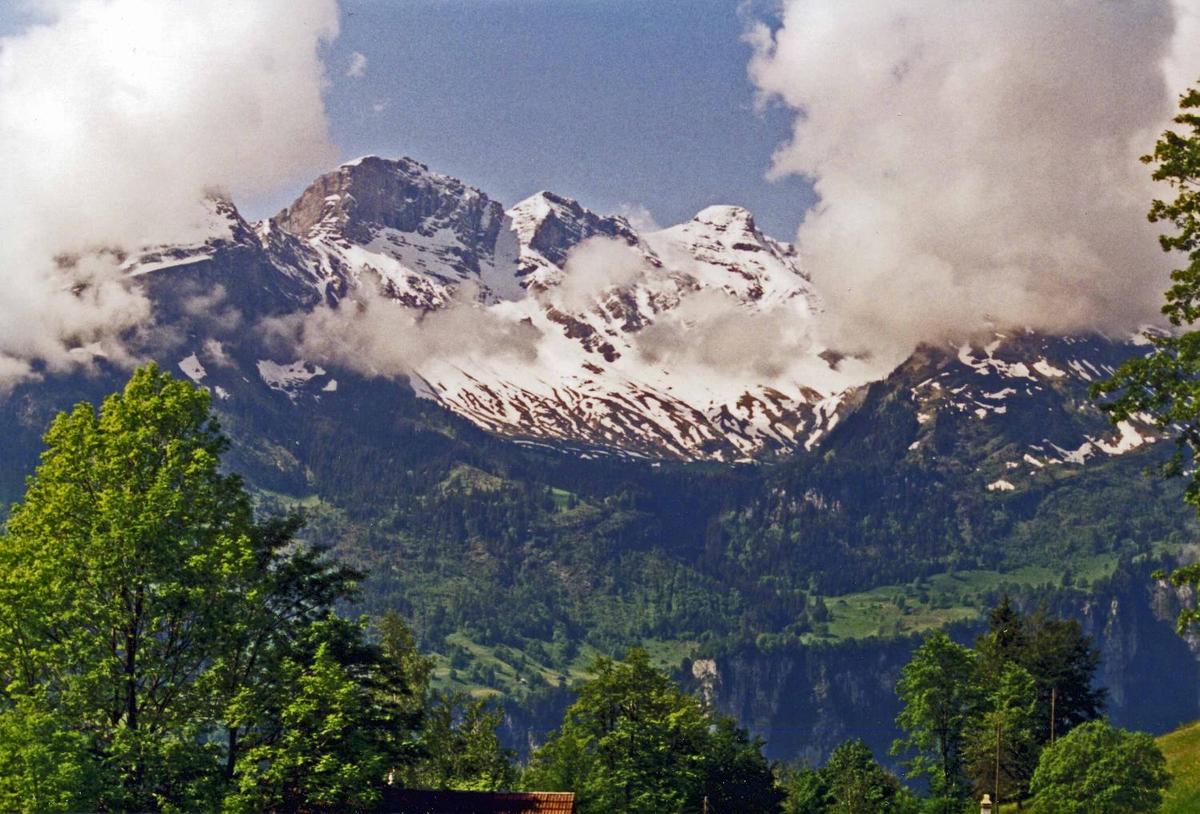
{"ops":[{"attributes":{"bold":true},"insert":"Towering peaks"},{"insert":" peer through some low-sailing clouds.\n"}]}
-
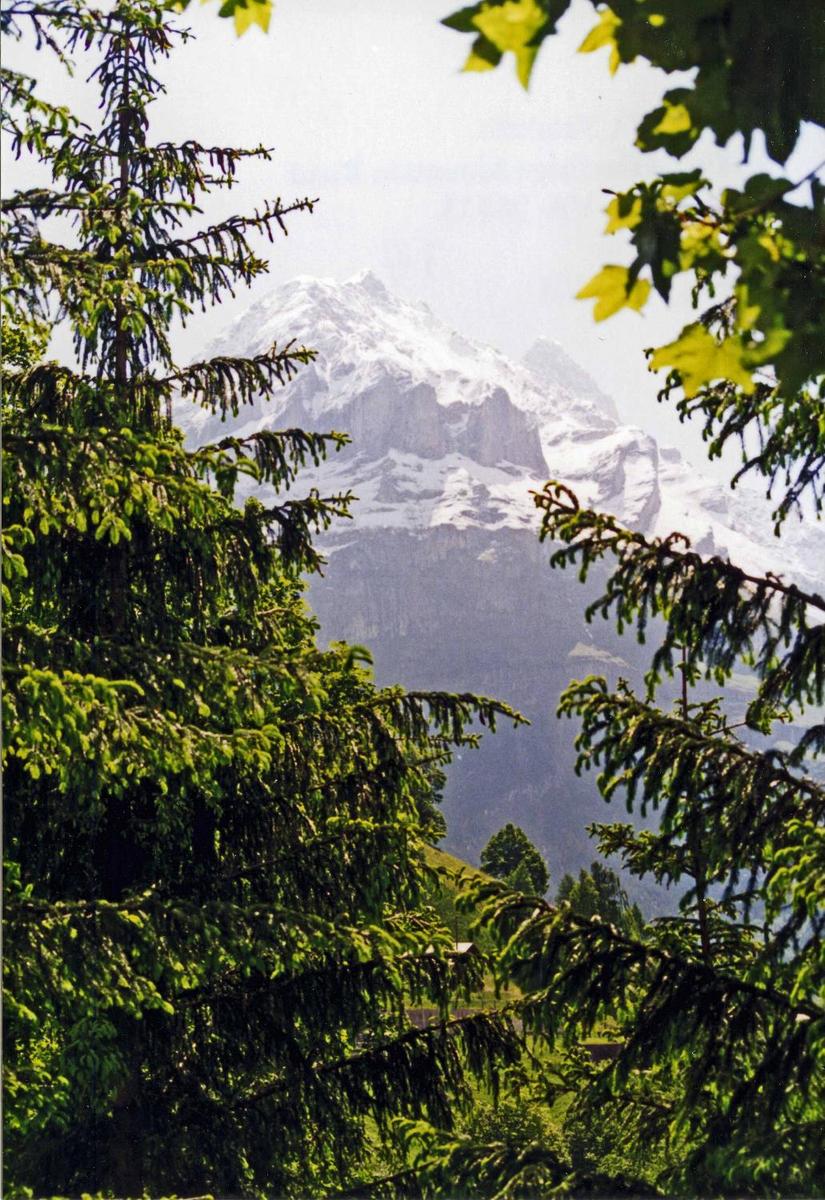
{"ops":[{"insert":"The "},{"attributes":{"bold":true},"insert":"Swiss Alps"},{"insert":" enfold a verdant valley.\n"}]}
-
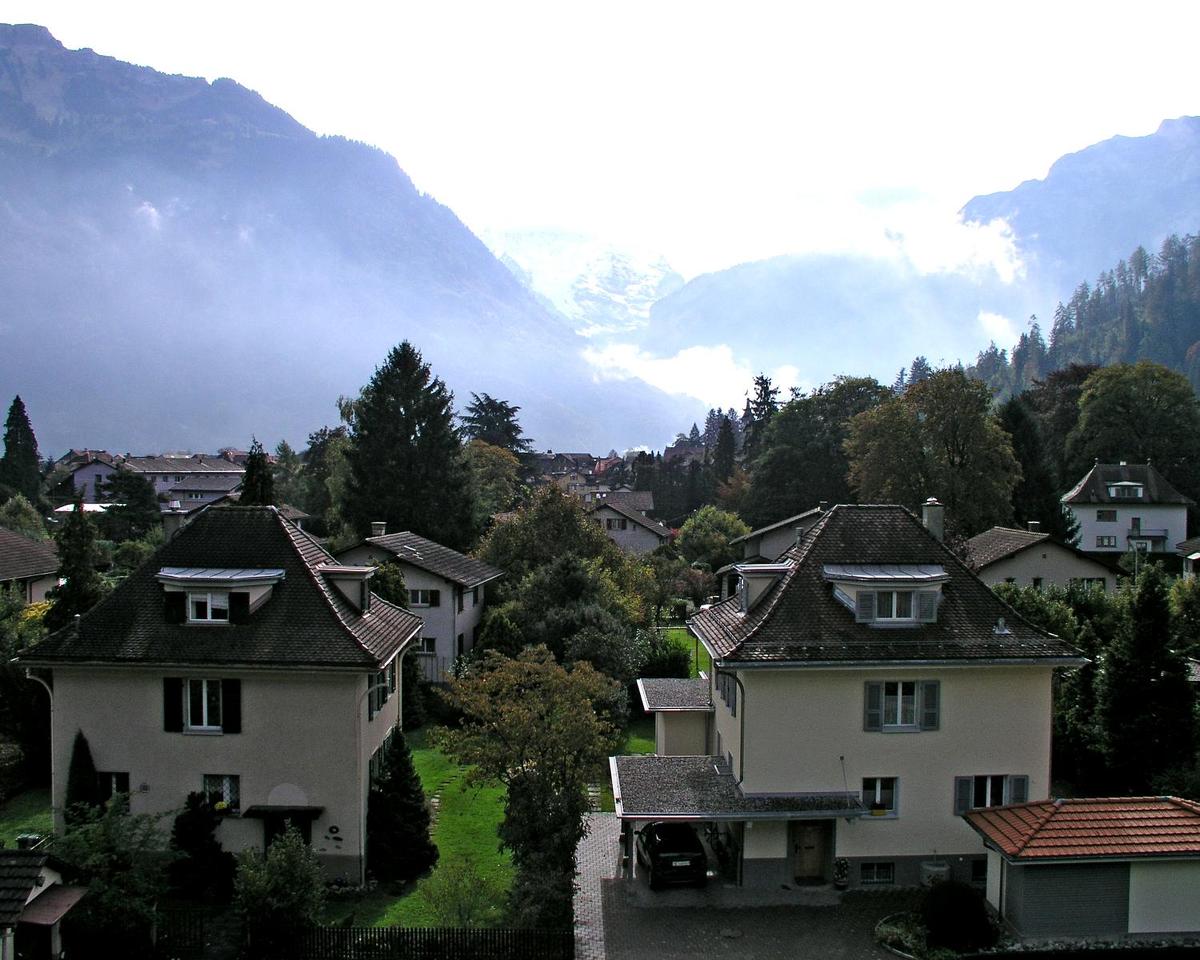
{"ops":[{"attributes":{"bold":true},"insert":"Sturdily built Swiss homes"},{"insert":" lie in the shadows of some imposing mountains.\n"}]}
-
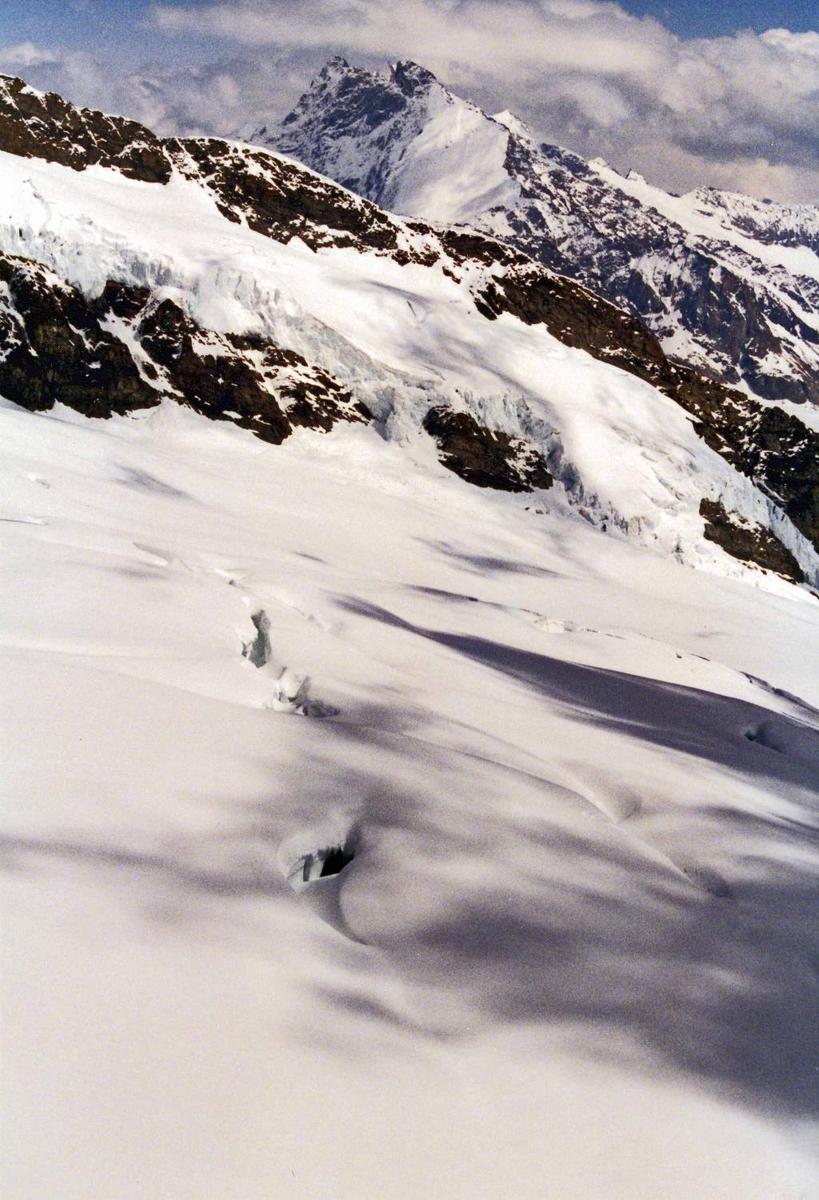
Snow, rocks, shadows, and peaks merge upward into the clouds.
-
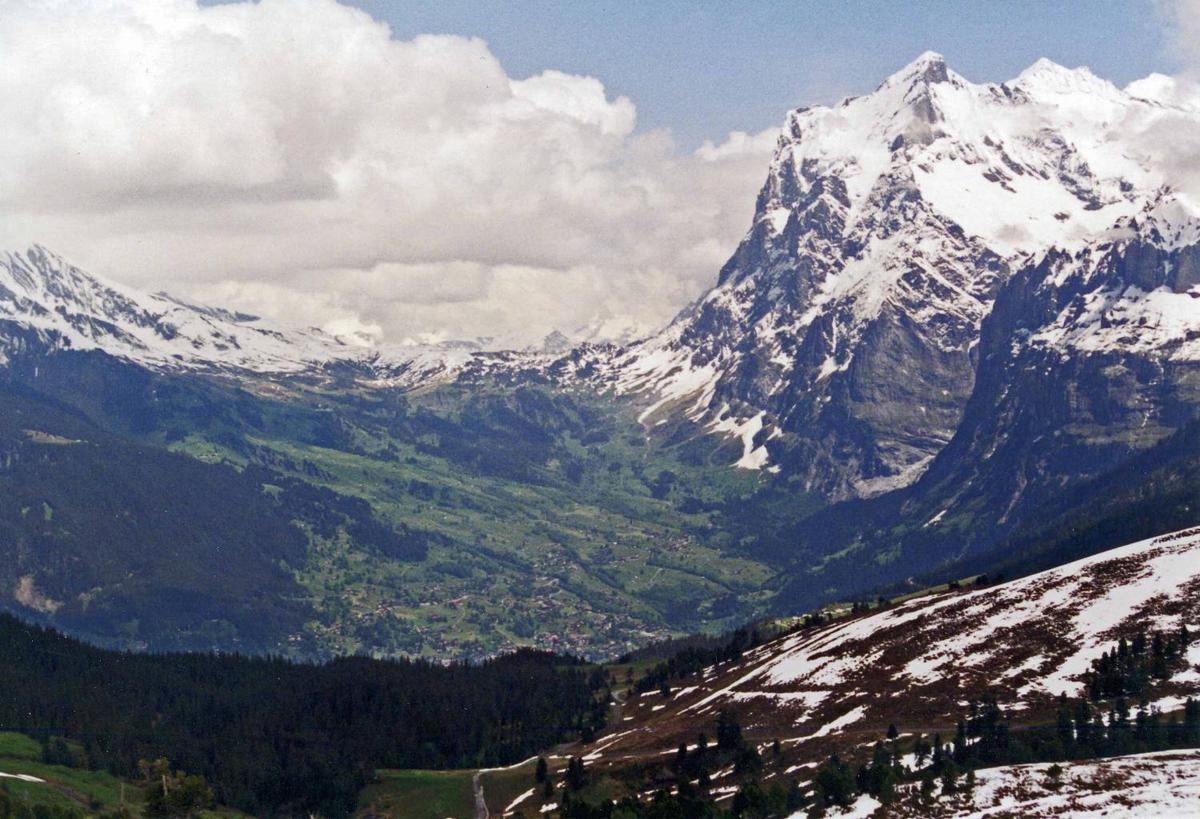
{"ops":[{"attributes":{"bold":true},"insert":"Mount Wetterhorn"},{"insert":" ("},{"attributes":{"bold":true},"insert":"3,692 m"},{"insert":"; 12,110 ft), near "},{"attributes":{"bold":true},"insert":"Grindelwald"},{"insert":", overlooks the upper reaches of an Alpine valley - still snow covered in June.\n"}]}
-
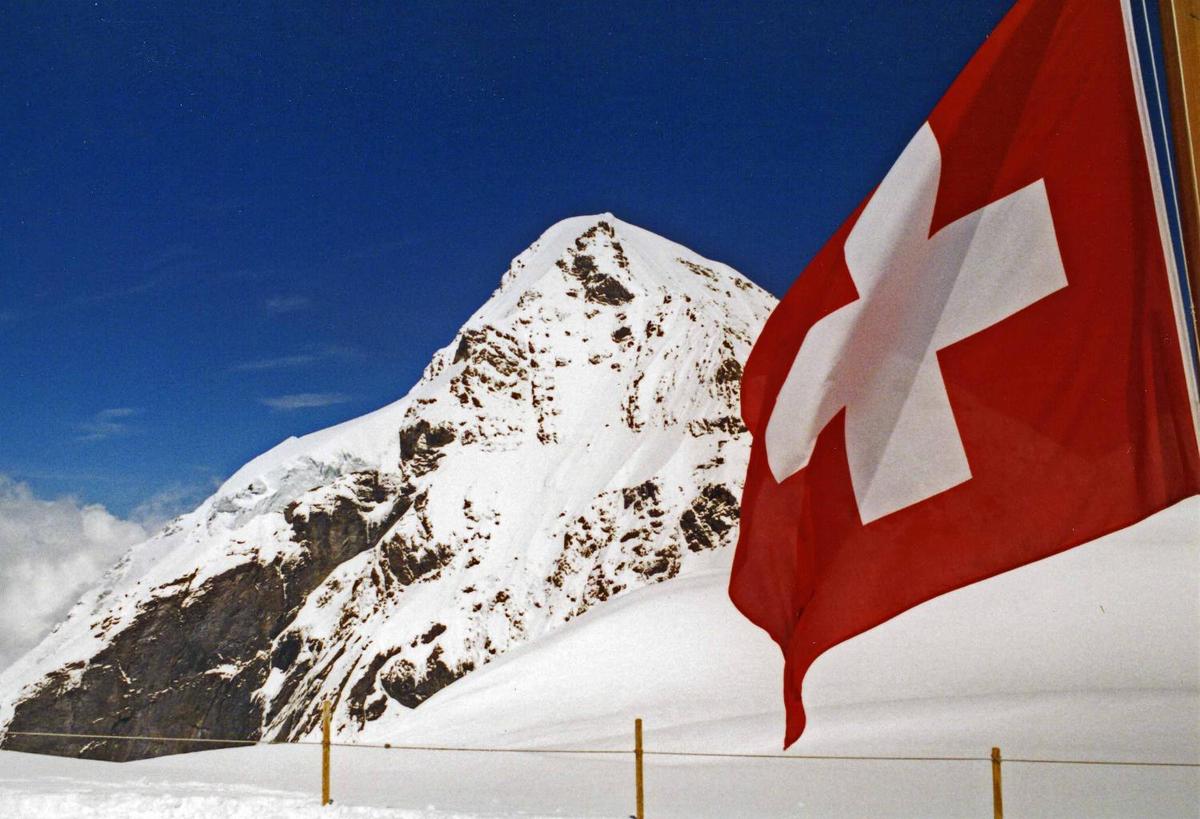
{"ops":[{"insert":"The "},{"attributes":{"bold":true},"insert":"Swiss flag"},{"insert":" against a field of snow.\n"}]}
-
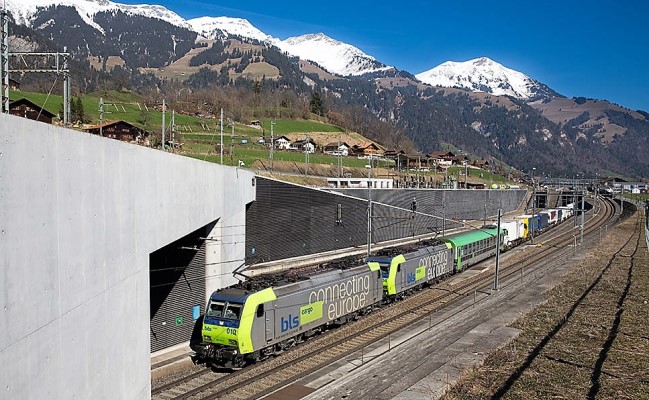
{"ops":[{"insert":"Entrance of the new Lötschberg"},{"attributes":{"bold":true},"insert":" Base Tunnel"},{"insert":", the "},{"attributes":{"bold":true},"insert":"third-longest railway tunnel"},{"insert":" in the world, under the old Lötschberg railway line. It was the first completed tunnel of the greater project NRLA.\n"}]}
-
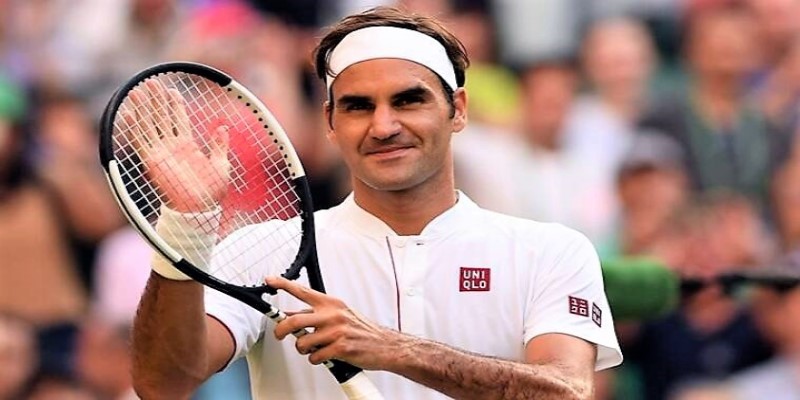
{"ops":[{"attributes":{"bold":true},"insert":"Rodger Federer"},{"insert":", the great tennis player from Switzerland, retired in 2022 after an immensely successful 26-year career.\n"}]}
-
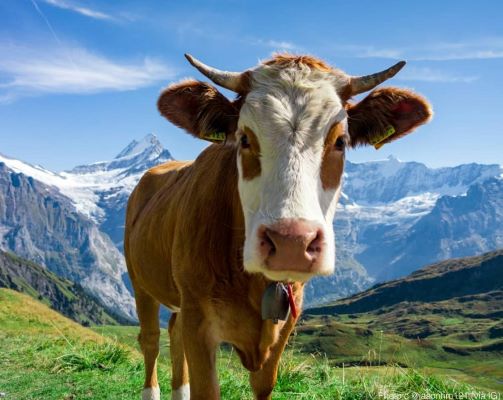
Swiss cows make the best milk...
-
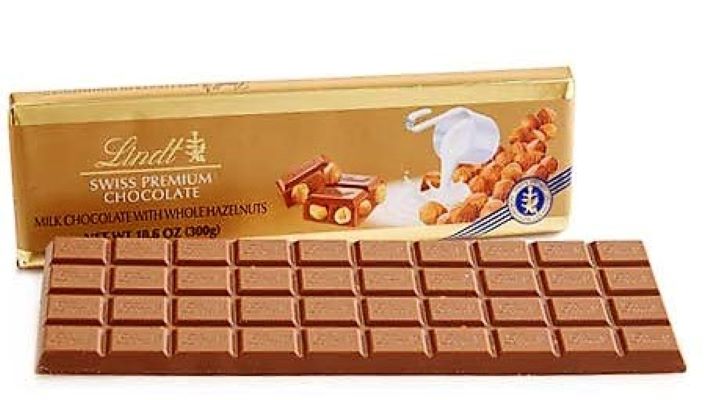
{"ops":[{"insert":"...the best milk makes the best (Swiss) chocolate.\n"}]}
keyboard_arrow_up

